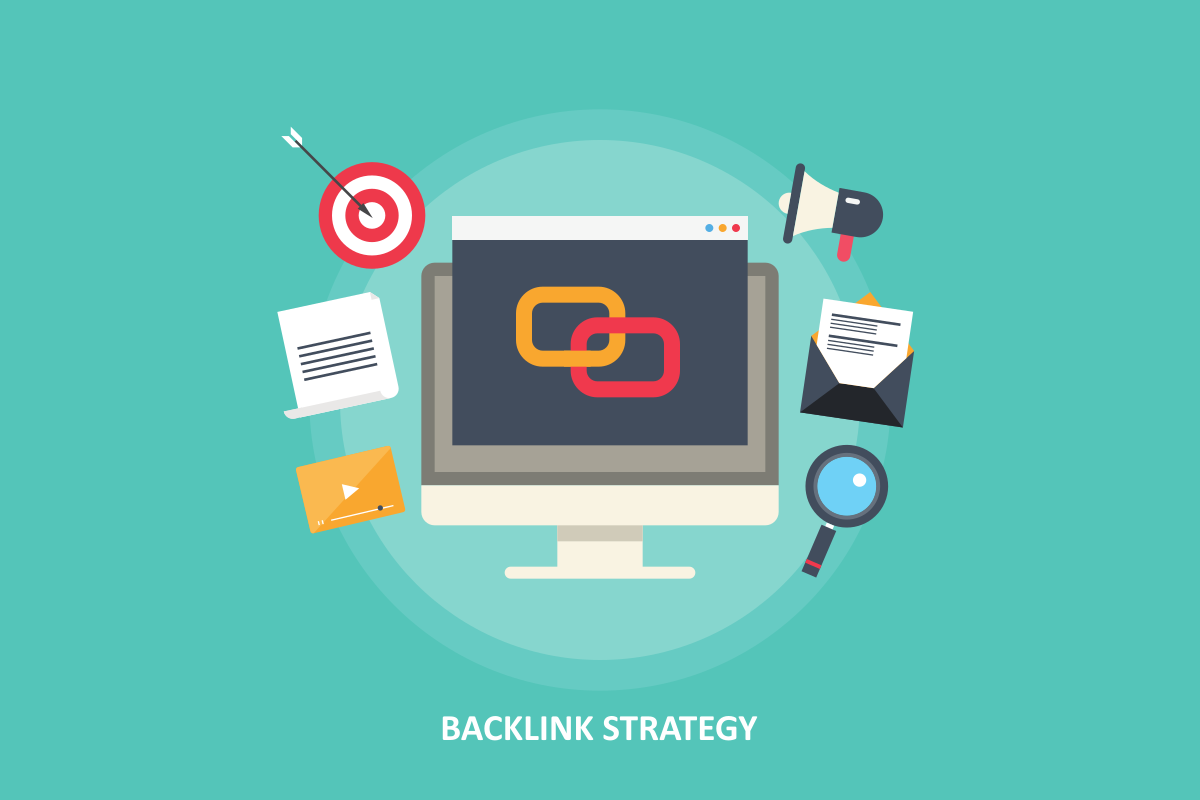Say you’ve got a nice looking website, but it’s still not ranking as well as you’d hoped. Frustrating, right? If your site isn’t climbing the search rankings or ranking for enough keywords, it’s time to ask yourself: When was the last time you updated it?
Consistently posting high-value content is essential for improving your search engine rankings and driving organic traffic. Simply “setting and forgetting” your website won’t cut it in today’s competitive SEO landscape.
That’s where an SEO content calendar comes in.
An SEO content calendar is a strategic tool that helps you plan and schedule continuous content creation based on in-depth SEO research.
But what does it entail? How do you actually create one that works? Let’s dive into the steps to build an effective SEO content calendar you and your team can execute.
What Is An SEO Content Calendar?
An SEO content calendar is a tool that helps you plan and schedule the content you are going to post on your website- specifically, SEO content designed to improve your website’s search engine rankings. Unlike traditional content calendars, which are often focused on publishing dates, general themes, or sometimes specific campaigns, an SEO content calendar is formed based on strategic findings such as keyword research, competitor research, search intent, and SEO priorities. Think of it as a roadmap to building out the content on your website – the antithesis of just posting content here and there with no real strategy.

Traditional Content Calendar vs. SEO Content Calendar
- Traditional Content Calendar: Aimed at scheduling general posts, blog updates, or announcements. The focus is on timing and frequency. Sometimes, the focus can be on a specific campaign or rollout of a new product or service.
- SEO Content Calendar: Strategically prioritizes content built around search terms, user intent, and website performance metrics. The focus is on rankings, visibility, and organic traffic.

Benefits of using an SEO content calendar
Using an SEO content calendar provides numerous benefits, from boosting your website’s ranking and visibility to keeping writing content a top priority for your team.
1. Improved Content Organization and Workflow
With an SEO calendar, you won’t have to scramble to come up with fresh ideas every week or wonder what to post. An SEO content calendar outlines what you’re writing about and when so there is no confusion. Let’s say you create a content calendar in January, coming up with topics and outlines for the next six months – for the next six, everything is all laid out, and you don’t have to stress about what to write.
2. Enhances SEO Efforts
By conducting keyword research, identifying keyword opportunities, and determining what content to add to your website—and then executing that new content—you’ll be better positioned to improve rankings, increase visibility, and effectively target user search intent. This approach is far more effective than posting content haphazardly without a clear purpose or keyword targeting.
3. Consistency and Reliability in Content Production
You know how it gets—when things get busy in a business, other things often fall to the wayside, including content production. With a clearly mapped-out content calendar and a streamlined workflow, you can ensure that large gaps between posts don’t happen and you don’t fall off entirely.
4. Promotes Content Freshness for SEO
Google values fresh, consistent content updates because the content is more likely to be accurate and relevant. This means that adding to it on a consistent basis will help bolster your SEO efforts more than if you were to post erratically or not at all.
5. Data-Driven Insights
One of the biggest benefits of having an SEO content plan is your ability to gain data-driven insights. You can review your content strategy monthly or quarterly to analyze which content types or topics perform best. From there, you can make changes to your content strategy and either remove topics that didn’t work well or create new opportunities. As we said earlier, this is the opposite of just posting content and “hoping for the best”. You can essentially use A/B test content to figure out what is going to deliver the best results.

Types of SEO Content For Your Calendar
So now that you know what an SEO calendar is and its benefits, let’s get into what types of content are typically included. Content calendars typically keyword forward and information-rich pages, such as:
1. Service Pages
If you don’t already have individual service pages or are adding a new service to your business, it’s essential to create dedicated pages for them. This is crucial for SEO as it helps with clear keyword targeting and ensures you’re found by people searching for your specific services.
2. Blog Posts
We can’t underestimate the importance of blog posts as a part of your content calendar/strategy. The reason is that Google uses E-E-A-T (Experience, Expertise, Authoritativeness, and Trustworthiness) as a key ranking factor. They also focus on “promoting content that users find genuinely helpful and informative.”
Blog posts are not only a way to provide genuinely useful information to your website visitors but also to demonstrate your subject matter expertise and position yourself as an industry expert.
3. Location Pages
If you’re looking to target customers or be found by searchers in nearby cities, you may consider location pages as a part of your content calendar. They are great for local SEO. For instance, if you are located in Bellevue but serve all of the greater Eastside, you can create specific pages targeting “Kirkland,” “Woodinville,” and “Redmond.”
4. User Guides and Listicles
As we said earlier, Google values content that is informative and helpful to users. That’s where long-form content like user guides and listicles come in. Not only are these posts extremely detailed, informative, and helpful for people searching for help or answers, but they are also extremely shareable and clickable (great for social media sharing & backlinking).

9 Tips For Creating Your Very Own Content Calendar
1. Define Your Goals
Start with your end game. What are you trying to achieve with your website? For instance:
- Is your site relatively small, and you’re looking to expand its presence?
- Are you focused on driving more organic traffic to your pages?
- Do you want to attract more customers in a specific city or area?
- Are you aiming to rank for informational keywords that showcase your expertise?
Your goals will dictate the types of content you want to post and your overall strategy. It will make sure that your content strategy helps you reach your business objectives.
2. Audit Your Existing Website
The first real step to creating a content calendar is to evaluate your current website content. Are certain pages outdated and in need of a refresh (e.g., too little content, outdated information, or not informative)? Or are there pages missing entirely, such as ones that don’t reflect your current service offerings? These should be your first priority to address.
Also, take a look at how your current pages are ranking. Are they performing well or not? This could indicate that your top priority should be fixing and optimizing what you already have before adding new content.
3. Keyword and Competitor Research
After deep diving into your existing website, it is time to find new keyword opportunities. Use tools like SEMrush or Ahrefs to identify high-value keywords relevant to your goals.
You might start with location-based keywords like “remodeling contractors in [city]” or “kitchen remodeling in [city].” Then, expand to specific service terms such as “bathroom renovations,” “basement finishing,” or “home additions. Another great strategy is to use these tools to find questions people are searching for that can make excellent blog topics or for a frequently asked questions page.
Ideally, the keywords you want your keywords to have the following:
- A high search volume and Cost-per-click
- A low or realistic difficulty level
- Are relevant to your services or business offerings
Aiming to have a small cluster (2-5) target keywords per content piece.
For example, if you want to create a kitchen remodeling service page, your keyword cluster may look like this:
- “Kitchen remodeling in Seattle”
- “Seattle kitchen remodeling contractors”
- “Custom kitchen designs Seattle”
- “Kitchen remodeling near me”
Another effective strategy is to analyze what your competitors are ranking for. For example, if you’re a remodeling contractor and one of your competitors is ranking high for an ADU (Accessory Dwelling Unit) page and receiving a lot of search traffic, you can create a similar page—or even a better one—tailored to your website.
In addition, take a look at the types of pages and content your competitors are posting. Are they publishing blog posts weekly? Do they have a careers page, FAQ page, or client testimonials?
It’s great to get these industry insights and see what commonalities lie across your competitors.
4. Use Search Intent To Determine the Content Type
One thing we haven’t talked about yet in this blog post is search intent. Search intent, or user intent, refers to the motivation behind a user’s query in a search engine. It reflects what the user aims to accomplish, whether that’s finding an answer, locating a specific website, purchasing a product, or researching a topic.
It’s imperative that you base your content strategy around search intent because it ensures that readers are engaging with content that aligns with their stage in the buying process or sales funnel.
The four types of search intent include:
- Navigational intent: Users want to find a specific page (e.g., “Facebook login”)
- Informational intent: Users want to learn more about something (e.g., “what is SEO”)
- Commercial intent: Users want to do research before making a purchase decision (e.g., “best coffee maker”)
- Transactional intent: Users want to complete a specific action, usually a purchase (e.g., “buy Nespresso”)
You need to understand where your target audience is in the buying process. If they don’t yet know about your product or brand, they won’t be searching for it directly. Instead, they’ll search for more informational questions, such as “What is the cost of a kitchen remodel?” or “How to plan a home renovation?”
On the other hand, if they’re ready to start or book a service but are still deciding who to go with, they’ll search for terms like “best remodeling contractor in [city]” or “how to choose a remodeling contractor.”
So, if you serve content that aligns with their search intent, they are more likely to engage with that piece of content and more likely to convert to being a customer.
5. Create Topics/ Content Pillars
One helping thing to think about when creating a content strategy or calendar is to break down topics or keywords into different groups, also known as “content pillars”. A content pillar is like a key theme or broad topic that can then be broken down into different subsets of topics.
For example, if you were a digital marketing company – “SEO” could be one of your content pillars. You can then create a cluster of topics that dive deeper into different subsets of topics, including: “On-Page SEO,” “Off-Page SEO,” “SEO for Beginners,” “Keyword Research,” etc. All of these relate to SEO but talk about a different aspect of it.
If you are a contractor, you could create content pillars based on key aspects of remodeling, such as planning and scheduling, budgeting, design trends, and room-specific remodeling.
By grouping content into pillars like these, you can create a comprehensive strategy that ensures consistency and depth. It avoids the risk of focusing too heavily on one topic and neglecting others. This also helps in SEO by targeting a variety of related keywords within the same thematic cluster.
6. Determine Your Content Formats
Once you have all your research done, determine your content formats based on the keyword you’re targeting and the search intent behind it. For example, if the keyword is a question, a blog post is a great format to provide detailed answers and useful information. For location-based keywords, a geo-targeted city page or landing page is ideal, as it helps you capture local search traffic. If the keyword revolves around a specific service, an information-rich service page is going to be a good idea.
7. Create a Content Production Workflow
Creating high-quality content is easier said than done. It doesn’t just take a content writer – it requires a full team putting in various efforts, such as SEO research, editing, and web design.
Part of the content calendar clearly denotes who is handling each part of these and what the handoff process is, E.I when the content is done and ready to be added, how do you give it over to the design team? Creating a clear content production and workflow process will make the whole act of creating content less time-consuming and stressful.
8. Create a Content Execution Calendar
Now that you’ve defined your goals, audited your website, and performed in-depth SEO research, it’s time to create your content calendar. You can use a variety of tools to create it. One good one to use right off the bat is Google Sheets or Excel. You can create a spreadsheet of the pages you are writing, the accompanying keywords, the date, and the order as well as link any other relevant documents or research. Once that is finalized, you can move it into a task management system like Trello or ClickUp to create tasks and assign them to team members.
8. Track Metrics and Adjust Strategy
As mentioned earlier in this guide, one of the greatest advantages of having a clear content calendar and strategy is the ability to track its performance using data. Tools like AHREFS allow you to monitor keyword rankings and page performance, while Google Analytics provides valuable insights into user behavior on your website. By analyzing which pages are performing well, which keywords are gaining traction, and which types of content resonate most with your audience, you can better understand what actions users are taking on your site.
With this data, you can refine and adjust your strategy.

Remember These Key Takeaways:
-
Don’t post content haphazardly or randomly—having a clear, structured strategy is key.
-
An SEO content calendar helps you stay consistent, organized, and intentional with your strategy.
-
Planning content around in-depth SEO research, such as keywords, competitors, and search intent, helps improve your search.
-
Use the right tools like Trello, Google Sheets, and analytics platforms to maintain and refine your calendar effectively.
Boost Your Website’s Ranking with an Effective SEO Content Plan
To sum up, creating an SEO content calendar is a powerful strategy to help your website rank higher in search engines, drive organic traffic, and engage your audience with relevant content. By understanding your goals, auditing your current content, and aligning your efforts with keyword, competitor, and search intent research, you can produce data-driven content that resonates with your audience and search engines alike.
Here at Integrity Marketing Services, we offer SEO services for clients, including SEO content strategy and creation. We can help you map out a content plan that is going to help you achieve your business goals and produce high-value content on a consistent basis. Get in touch with us today to get started.
About the author
April Young
April is our Project and Content Manager, known for her strong communication skills. With years of experience in SEO, copywriting, project planning, and contract management, she excels in creating compelling website content and leading a dynamic team of copywriters, web designers, and contractors.





